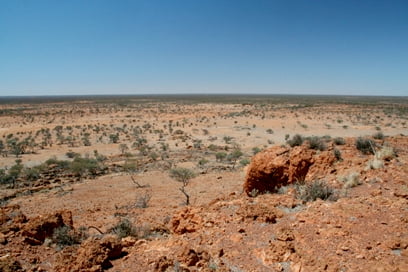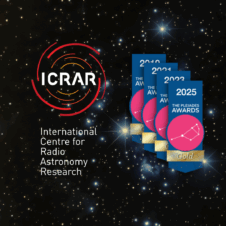
The candidate core site for the Australia – New Zealand SKA bid,
the Murchison Radio-astronomy Observatory (MRO), in Western Australia.
Credit: Ant Schinckel, CSIRO.
Commonwealth and Western Australian Government officials met on 2 December 2010 to discuss spectrum management in the Mid West Radio-Quiet Zone. Currently the Australian Communications and Media Authority (ACMA) is consulting on a Band Plan which aims to increase radio-quiet protection for the Murchison Radio-astronomy Observatory (MRO).
In re-affirming their strong support for the Square Kilometre Array (SKA) bid and the enhancement of radio-quiet protection for the MRO, the Commonwealth and State recognise there is a unique opportunity to promote co-existence of the MRO with other industry uses.
Consequently the Governments remain committed to having an effective management regime based on a collaborative approach within a set of agreed guidelines.
The management regime will include but not be limited to:
- dispute resolution procedures in a formal agreement
- technical advisory guidelines regarding the compliant operation of equipment in the Mid West Radio-quiet Zone.
Both Governments acknowledge the need to support the radio-quiet requirements of radio astronomy projects through the implementation of measures to minimise radio-frequency interference in the region of the Mid West Radio-quiet Zone and have agreed to work towards a regime which incorporates the following elements.
While industry may be able to operate within the 70km radius Radio Telescope Mineral Resource Management Area, such operation would be secondary to radio astronomy and consequently subject to the stringent controls of the proposed ACMA Band Plan and the Western Australian Mining Act (1978).
For industry, activity between a radius of 70 km and 150km a co-existence principle will apply. Industry in this region would be required to consult with the MRO entity to develop technical solutions that minimise the radio-frequency impact of their operation on the radio astronomy operations. In return the MRO entity will be required to facilitate practical solutions that maximise opportunity for shared use of spectrum within acceptable limits. It is intended to incorporate the co-existence principle and management framework for the Mid West Radio-quiet Zone in a formal agreement between the Commonwealth and State Government of Western Australia.
In developing this approach the Governments recognise the need for industry to have sufficient certainty regarding long-term spectrum use to enable investment decisions to be made. This extends to ongoing support for agreed technical solutions.
“I am very pleased to see the State and Federal governments reaffirm their strong support for maintaing the Mid West of WA as one of the most radio quiet zones on the planet.
The unique radio quietness of the Australia/NZ SKA candidate core site will enable international radio astronomy to maximize its ability to make new discoveries. Working together with the various development interests in the WA Mid West is vital, and I am sure this can work to the mutual benefit and success of all parties,” says Professor Peter Quinn, ICRAR’s Director.

